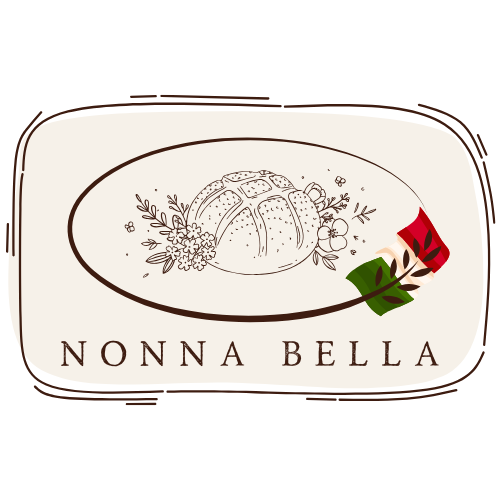
Easy Sourdough Baking: Five Tips for Crispy and Delicious Homemade Bread
There's something inherently satisfying about baking your own sourdough bread at home. The aroma that fills your kitchen, the crispy crust that crackles as you slice through, and the tangy yet complex flavor profile—it's like having a slice of Italian artisanal tradition at your fingertips. If you’re looking to elevate your homemade sourdough game, dive into the world of sourdough starter and wild yeast fermentation with these five essential tips.
For more resources and products that can enhance your sourdough baking journey, be sure to visit italiansourdough.com.
1. Understanding Your Sourdough Starter
A successful sourdough bread recipe starts with a robust sourdough starter. This living mixture of flour and water is teeming with wild yeast and bacteria, which are essential for sourdough fermentation. If you're new to sourdough, consider investing in a quality Sourdough Starter Kit that includes everything you need to start your sourdough life.
How to Feed Sourdough Starter
Feeding your sourdough starter is crucial for maintaining its health and vigor. Typically, a sourdough starter feeding schedule involves mixing equal parts of flour and water into your starter daily. If you're planning to bake less frequently, storing your starter in the fridge and feeding it once a week is a suitable strategy.
Troubleshooting Your Sourdough Starter
Is your starter not bubbling as expected? It might need more frequent feedings or a warmer resting environment. Keep it healthy and monitor its activity to ensure the best results in your sourdough bread.
Sourdough Starter vs Yeast
A sourdough starter relies on naturally occurring wild yeast, unlike the commercially available yeast used in other baking. This not only enhances the bread’s flavor but also offers potential benefits for those seeking sourdough for diabetics as it may have a lower glycemic index.
2. Perfecting the Fermentation Process
Sourdough fermentation is an art, and mastering it can transform your bread from good to exceptional. It's during this stage that the dough develops its flavors and textures through the action of wild yeast fermentation.
Benefits of Sourdough Fermentation
Unlike regular bread, sourdough for diabetics might be beneficial due to its unique fermentation process lowering the bread's overall sugar content. Moreover, sourdough fermentation can break down gluten, making it a better option for those with mild gluten sensitivities.
Techniques for Better Fermentation
A consistent room temperature and precise timing are key. Consider using a Nonna Bella 5kg Digital Kitchen Scale for accurate measurements to maintain dough consistency and keep track of time.
3. Mastering the Sourdough Dough
Shaping and scoring your sourdough are crucial steps that affect both its aesthetics and texture. Achieving that signature artisan bread baking look requires practice.
How to Shape Sourdough Bread
Gently handle your dough with care and employ proper folding techniques to develop structure. Patience is key in letting the dough rest and relax between shaping.
Best Sourdough Scoring Techniques
Scoring isn’t just for aesthetics; it also controls how the dough expands in the oven. Experiment with different patterns using a sharp blade to improve both the look and the crumb of your bread.
4. Baking for a Crispy Crust
The pursuit of the perfect crispy sourdough bread crust is one of life's great quests for bakers.
How to Get a Crispy Sourdough Crust
Ensure your oven is preheated to the right temperature. Baking with steam can enhance the crust's crunchiness. Consider using a Non Stick Silicone Baking Mat for an evenly baked crust.
Sourdough Bread Troubleshooting
If the crust isn’t to your liking, check your oven’s temperature accuracy and adjust the hydration level of your dough. Each oven is unique, so it may take some trials to perfect your technique.
5. Discovering Sourdough Beyond Bread
While bread may be the reigning king in the world of sourdough, there are other delightful pathways to explore, such as sourdough pizza dough and sourdough bagels.
Italian Sourdough Bread and Pizza
Bring a slice of Italy to your home with Italian sourdough bread or bake crispy sourdough pizzas using Nonna’s 12-inch Cordierite Stone. For an even crust, consider a Pizza Baking Screen.
Utilizing Sourdough Discard
Don't let sourdough discard go to waste. Incorporate it into recipes such as pancakes, waffles, or cookies to add a tangy twist to your breakfast or dessert.
In conclusion, embarking on a sourdough baking journey is as rewarding as it is flavorful. By understanding the ins and outs of sourdough, from starter maintenance to fermentation intricacies, you pave the way for artisan-quality homemade sourdough. Whether you’re troubleshooting your dough or seeking the best tools for your bake, italiansourdough.com offers the essentials and inspiration you need to succeed. Happy baking!
